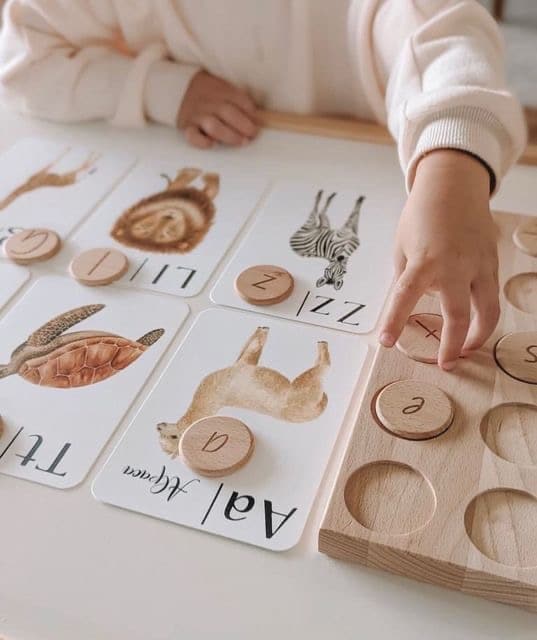Did you know the average child spends over 7 hours a day on screens?
Children today are growing up in an environment saturated by screens. Smartphones, tablets, televisions, and gaming consoles are seemingly everywhere, leading them down a path of decreased physical activity, shorter attention spans and straining family relationships. More than ever it’s important for kids to unplug from these technologies and rediscover the joys of active play ideas for kids and creative play. In this article, we will look at how you can lead them on an exciting adventure-filled path away from screens into playtime.

Why It’s Time to Step Away From the Screen
The digital world can be irresistible. Apps and video games provide endless levels to conquer, while online videos seem never ending. Unfortunately, too much screen time can have its drawbacks. Research indicates this can have detrimental effects on children’s social skills, sleep patterns and physical health, not forgetting robbing them of carefree play that’s important for their development. Luckily, with some creativity and perseverance, you can help your child find a healthier balance.
Create a Screen-Free Zone
To reduce screen reliance in your home, the first step should be establishing boundaries as well as organising creative play for kids and family bonding activities. Designate certain rooms of the house as screen-free zones such as meal times in the kitchen or family time in the living room which reinforces presence and connection. Model this behaviour yourself for added impact as kids tend to follow rules more quickly when adults model these behaviours themselves.
Make Outdoor Adventures – Alternatives to Screen Time
Nature provides an effective remedy for screen fatigue. Plan family hikes, set scavenger hunts or simply explore your local park with a frisbee in hand. Outdoor activities not only get kids moving but also spark curiosity about their world and generate a sense of wonderment about its inhabitants. Even playing tag in the backyard works wonders.
Backyard Cubby House Adventures
A cubby house can be an amazing tool to reduce screen time and encourage creative play in the backyard. A cubby house serves as an oasis for children to escape into, transforming from a pirate ship to castle with each turn of their imagination. A cubby house provides kids with the space necessary for role playing, social development and outdoor fun all within one structure. While simultaneously encouraging independence and an ongoing sense of adventure right at home.
Get Creative, Literally
Get your child’s inner artist going by engaging them in creative activities. Start small, like painting or crafting projects, and watch as they blossom into mini Picassos. Promote interactive play like LEGO building, cookie baking and gardening. These activities not only eliminate screen time but also strengthen problem-solving skills and self-expression.
Schedule a Playdate… the Old-Fashioned Way
Socialising doesn’t need to happen via video games or social media alone. Encourage your child to invite their friends over for board games, sports in the backyard, adventures or dress-up activities instead. Old-fashioned playdates help children develop cooperation, communication and compromise skills, life skills that cannot be replicated via an online chatroom.
Conclusion
Helping kids break free from screen dependency requires effort and patience, but the rewards are well worth your efforts. By engaging them in creative play, outdoor adventures, and meaningful family bonding time together, not only are you cutting down their screen time but enriching their lives too. Plus who knows? Maybe you might discover an appreciation for playing by yourself. It’s time to put down that tablet and tune in for fun.
We’d love to hear from you! What are your favourite screen-free activities for kids? Share your tips and stories in the comments below.
How can I set screen time limits for kids?
Setting screen time limits for kids starts with clear boundaries and consistent rules.
- Offer Alternatives: Redirect their attention to activities like outdoor play, reading, or creative projects.
- Establish Time Frames: Use guidelines like no screens during meals or before bedtime.
- Create a Schedule: Use timers or parental controls to enforce limits, such as 1–2 hours per day for leisure screen time.
- Model Healthy Behavior: Lead by example by limiting your own screen usage.
What are some fun screen-free activities for toddlers?
Toddlers thrive on hands-on activities that stimulate their senses and motor skills. Try these ideas:
- Outdoor Play: Set up a mini obstacle course or play simple games like “Follow the Leader.”
- Building with Blocks: Enhances fine motor skills and problem-solving.
- Messy Play: Use playdough, finger painting, or sensory bins for creative exploration.
- Storytime: Read colorful picture books together to spark imagination.
Why is reducing screen time important for kids?
Reducing screen time is crucial for a child’s mental, emotional, and physical development.
- Boosts Creativity: Screen-free play encourages problem-solving and imaginative thinking.
- Improves Social Skills: More time spent interacting face-to-face enhances communication.
- Supports Better Sleep: Less exposure to blue light promotes healthier sleep patterns.
- Encourages Physical Activity: Reducing sedentary time leads to better fitness and motor skills.









Leave a Comment